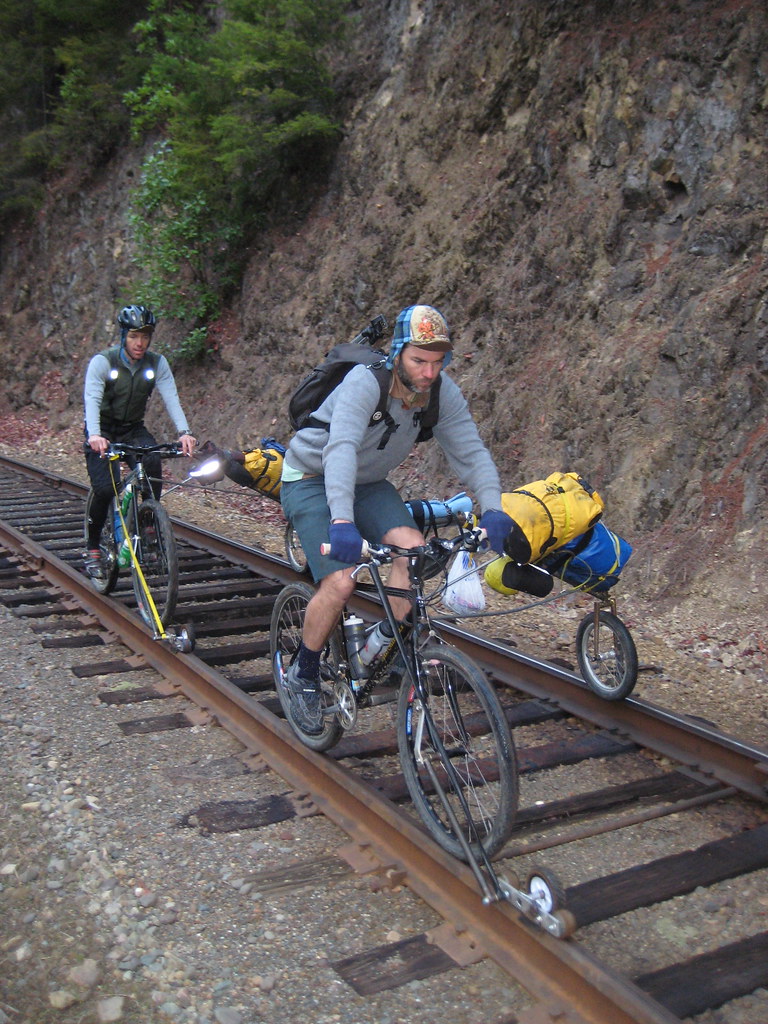Probably the most famous objet d'art that has anything to do with cycling is the "bull" Pablo Picasso fashioned from a bicycle saddle and handlebars.
There are others, of course, including Marcel Duchamp's bicycle wheel. On the other hand, we don't often hear about performance art based on bicycles or bicycling.
Now an artist and librarian based in Oakland, California plans to help fill that void.
Lisa Conrad plans to cycle across the state of Nebraska from Thursday, 30 May until 15 June. She will be accompanied by other artists who plan to traverse the state from west to east. After the Cornhusker State, they plan to ride across Iowa.
Now, they are not the first cyclists to ride across either state. What will be different is their route, which will trace abandoned railroad tracks and the gaps between them. The purpose, she says, is to explore the role of the railroad in the making of the United States, in particular through examining the tension between the romance of the rails and the reality of making them, which was often exploitative, to put it mildly.
While she doesn't mention anything about it, the ride/performance piece--called 4 -1/2 ft, after the standard width of a railroad track--the coincides with the 150th anniversary of the Transcontinental railroad.
This isn't the first such ride for Conrad and the other artist-cyclists. Previously, they did a similarly-themed ride across Washington State and Northern Idaho, and another through Montana into Wyoming.
You can learn more about 4 -1/2 ft at their website.
There are others, of course, including Marcel Duchamp's bicycle wheel. On the other hand, we don't often hear about performance art based on bicycles or bicycling.
Now an artist and librarian based in Oakland, California plans to help fill that void.
Lisa Conrad plans to cycle across the state of Nebraska from Thursday, 30 May until 15 June. She will be accompanied by other artists who plan to traverse the state from west to east. After the Cornhusker State, they plan to ride across Iowa.
Now, they are not the first cyclists to ride across either state. What will be different is their route, which will trace abandoned railroad tracks and the gaps between them. The purpose, she says, is to explore the role of the railroad in the making of the United States, in particular through examining the tension between the romance of the rails and the reality of making them, which was often exploitative, to put it mildly.
While she doesn't mention anything about it, the ride/performance piece--called 4 -1/2 ft, after the standard width of a railroad track--the coincides with the 150th anniversary of the Transcontinental railroad.
This isn't the first such ride for Conrad and the other artist-cyclists. Previously, they did a similarly-themed ride across Washington State and Northern Idaho, and another through Montana into Wyoming.
You can learn more about 4 -1/2 ft at their website.

























